Some diagrams of basic physics problems involving masses, springs, ropes and pulleys with forces and tension. For more related figures, please see the “forces” or “Newton’s laws” tag.
With a pulley, you can using your body weight to your advantage to make it easier to lift a mass:
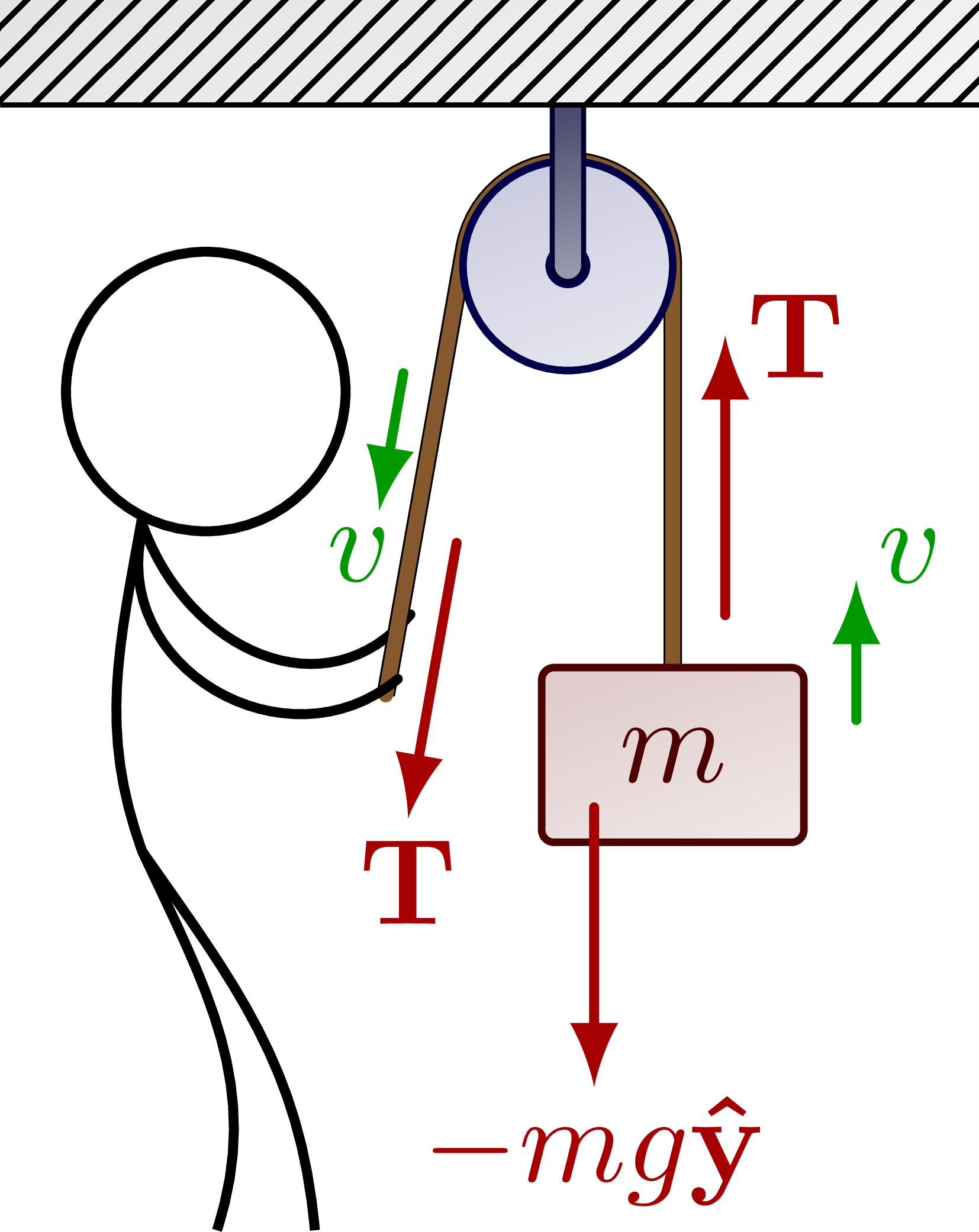
Block and tackle with a snatchblock:
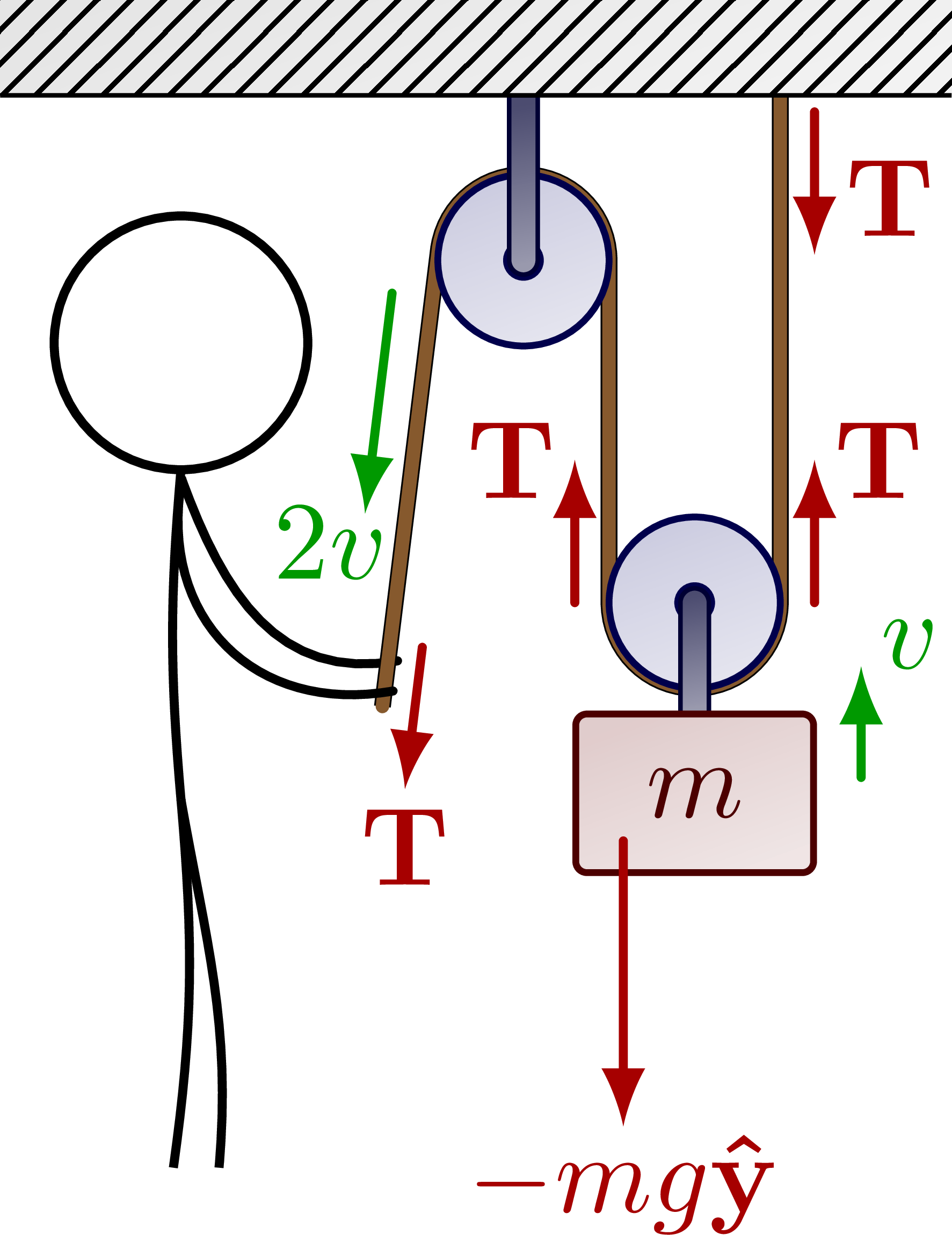
Three masses hanging from two pulleys:

Force diagrams for the three tensions in the rope suspending the middle mass:
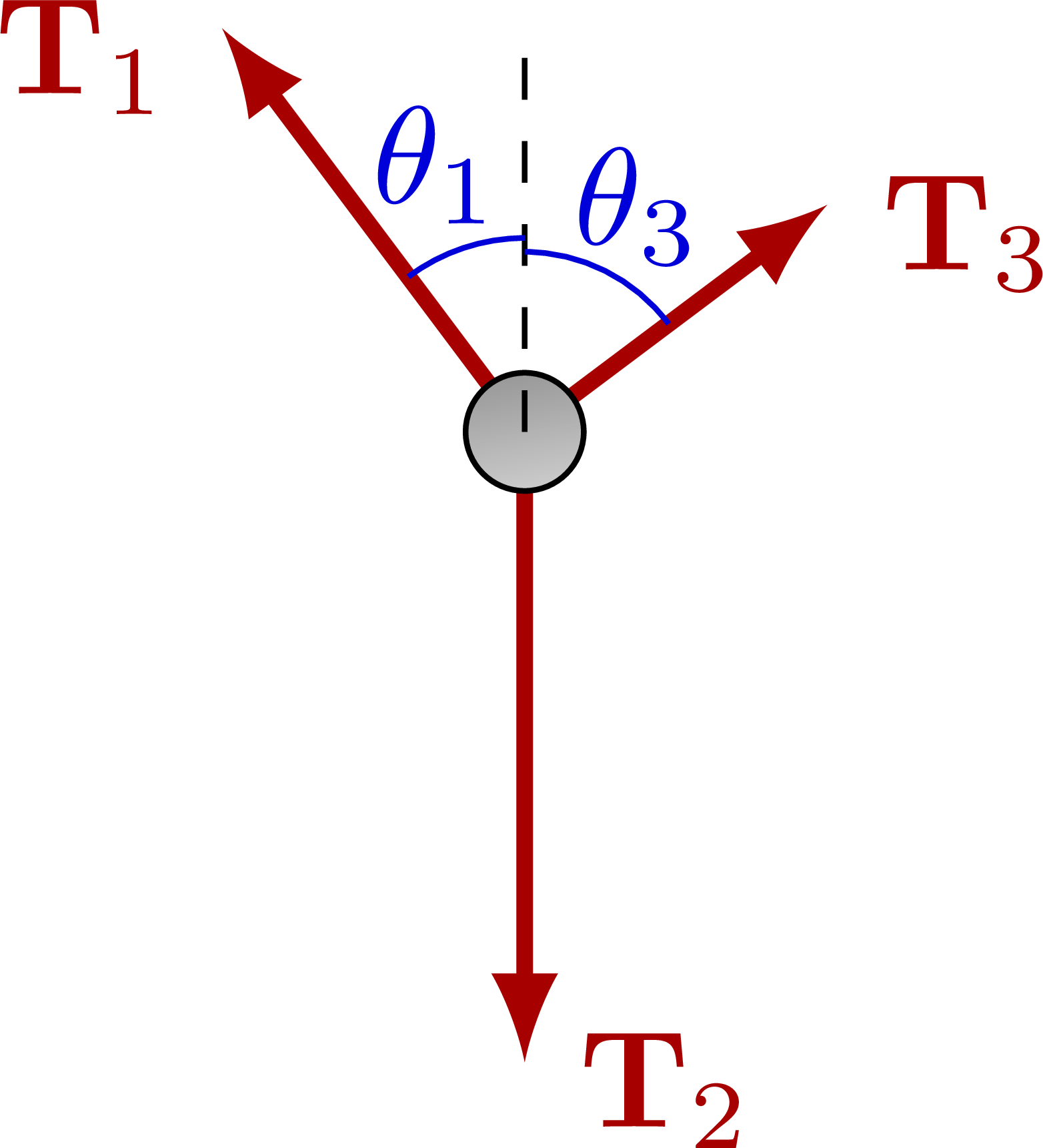
The ropes make a right angle if the tensions have a 4:5:3 ratio:
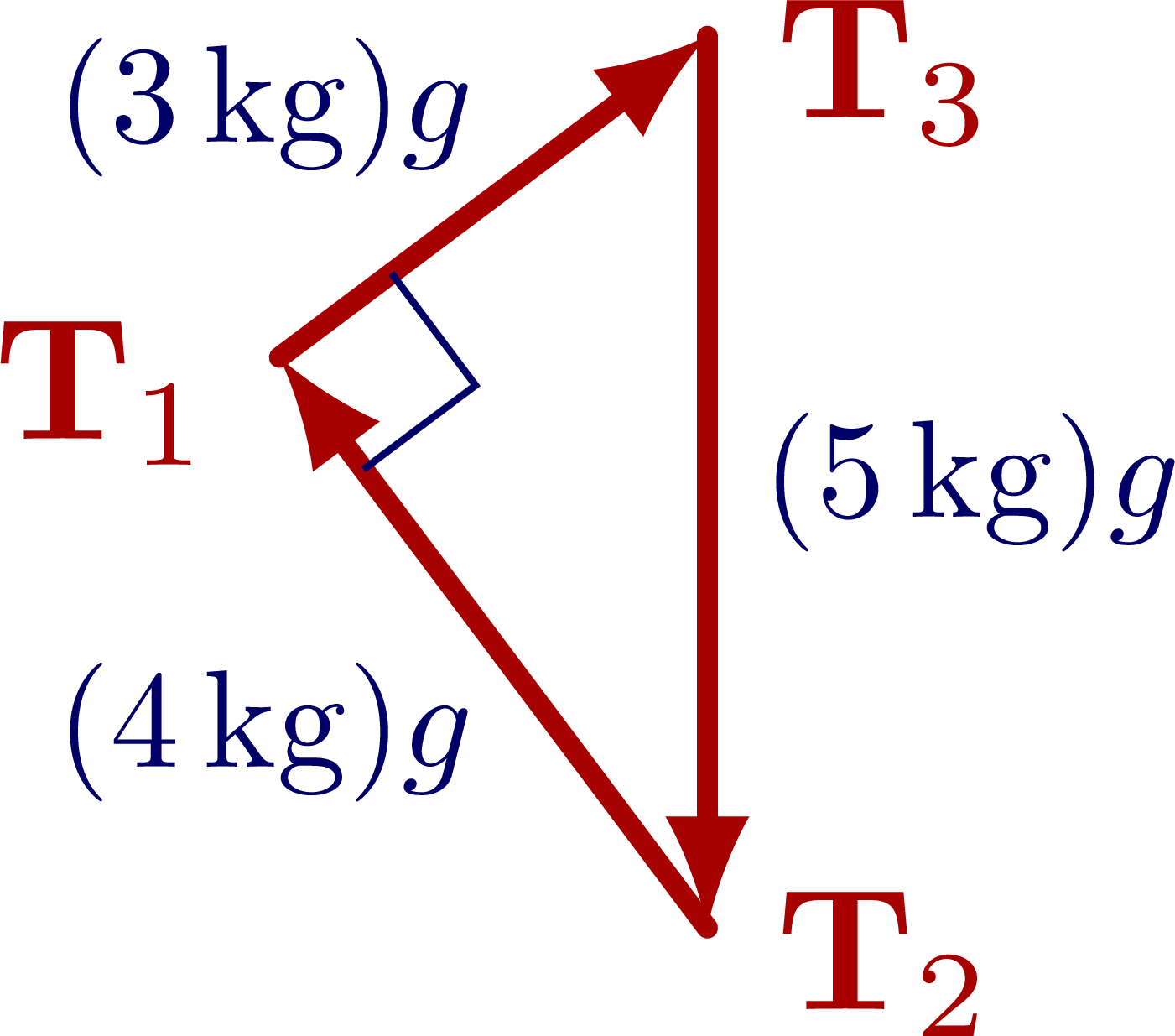
Edit and compile if you like:
% Author: Izaak Neutelings (September 2020)% Inspiration: https://tex.stackexchange.com/questions/25531/adding-underbrace-in-tikz\documentclass[border=3pt,tikz]{standalone}\usepackage{physics}\usepackage{siunitx}\usepackage{ifthen}\usepackage{tikz}\usetikzlibrary{calc}\usetikzlibrary{angles,quotes} % for pic\usetikzlibrary{patterns,snakes}\tikzset{>=latex} % for LaTeX arrow head\colorlet{xcol}{blue!85!black}\colorlet{vcol}{green!60!black}\colorlet{myred}{red!65!black}\tikzstyle{vvec}=[->,vcol,thick,line cap=round]\tikzstyle{ground}=[preaction={fill,top color=black!10,bottom color=black!5,shading angle=20},fill,pattern=north east lines,draw=none,minimum width=0.3,minimum height=0.6]\tikzstyle{metal}=[fill,top color=black!40,bottom color=black!20,shading angle=10]\tikzstyle{mass}=[line width=0.6,red!30!black,fill=red!40!black!10,rounded corners=1,top color=red!40!black!20,bottom color=red!40!black!10,shading angle=20]\tikzstyle{pulcol}=[draw=blue!30!black,%fill=blue!40!black!10top color=blue!40!black!20,bottom color=blue!40!black!10,shading angle=20]\tikzstyle{rope}=[brown!70!black,very thick,line cap=round]\def\rope#1{ \draw[black,line width=1.5] #1; \draw[rope] #1; }\tikzstyle{mount}=[blue!20!black,fill,top color=blue!20!black!70,bottom color=blue!20!black!40,shading angle=10] %,line width=1.8,line cap=round%\tikzstyle{mount}=[color=black!60,line width=1.8,line cap=round]\tikzstyle{spring}=[line width=0.8,black!80,snake=coil,segment amplitude=5,segment length=5,line cap=round]\pgfdeclarelayer{back} % to draw on background\pgfsetlayers{back,main} % set order% FORCES SWITCH\tikzstyle{force}=[->,myred,thick,line cap=round]\newcommand{\vbF}{\vb{F}}\newcommand{\vbT}{\vb{T}}\newboolean{showforces}\setboolean{showforces}{true}\newcommand\rightAngle[4]{\pgfmathanglebetweenpoints{\pgfpointanchor{#2}{center}}{\pgfpointanchor{#3}{center}}\coordinate (tmpRA) at ($(#2)+(\pgfmathresult+45:#4)$);
Click to download: dynamics_pulley.tex • dynamics_pulley.pdf
Open in Overleaf: dynamics_pulley.tex


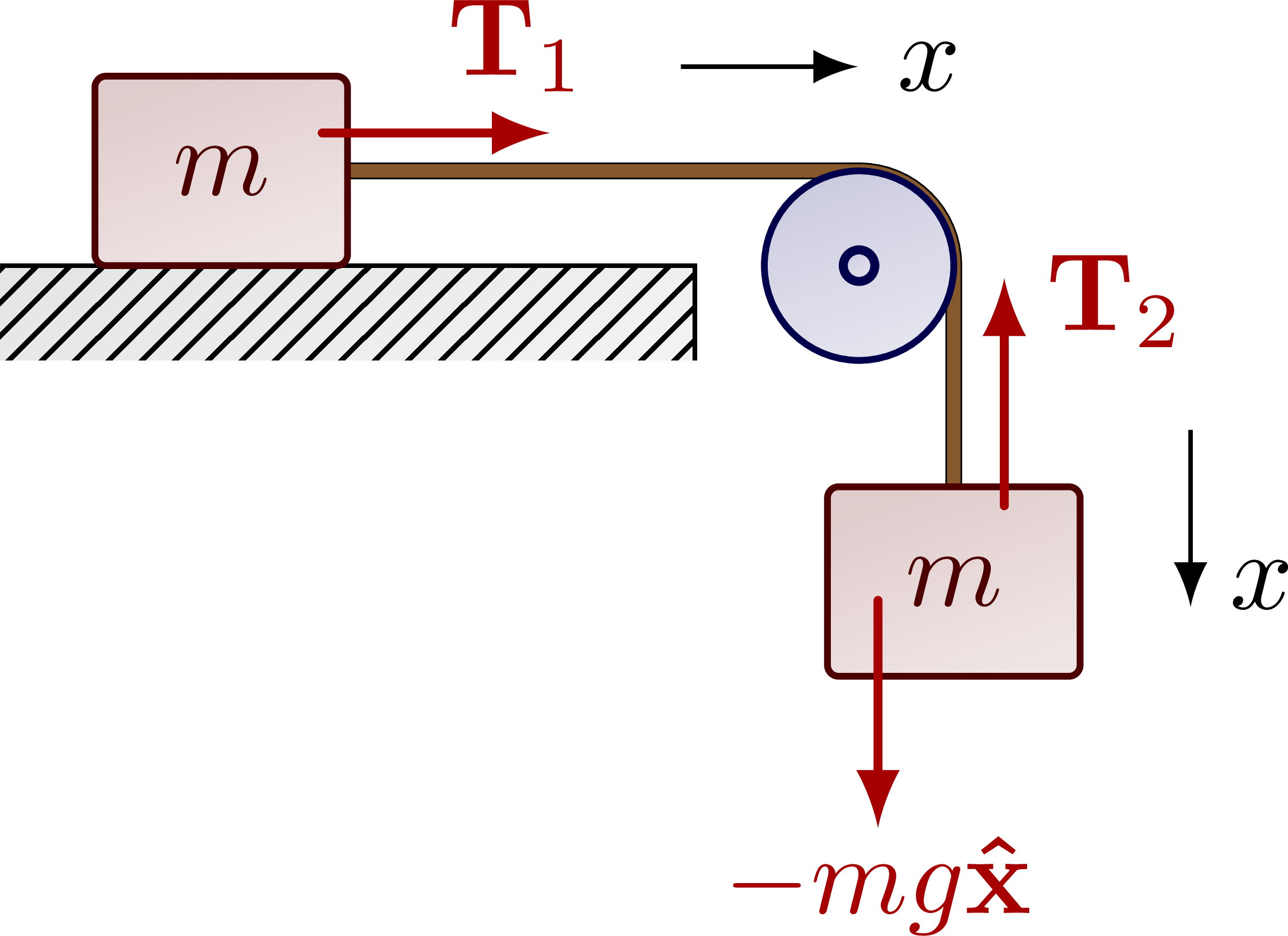
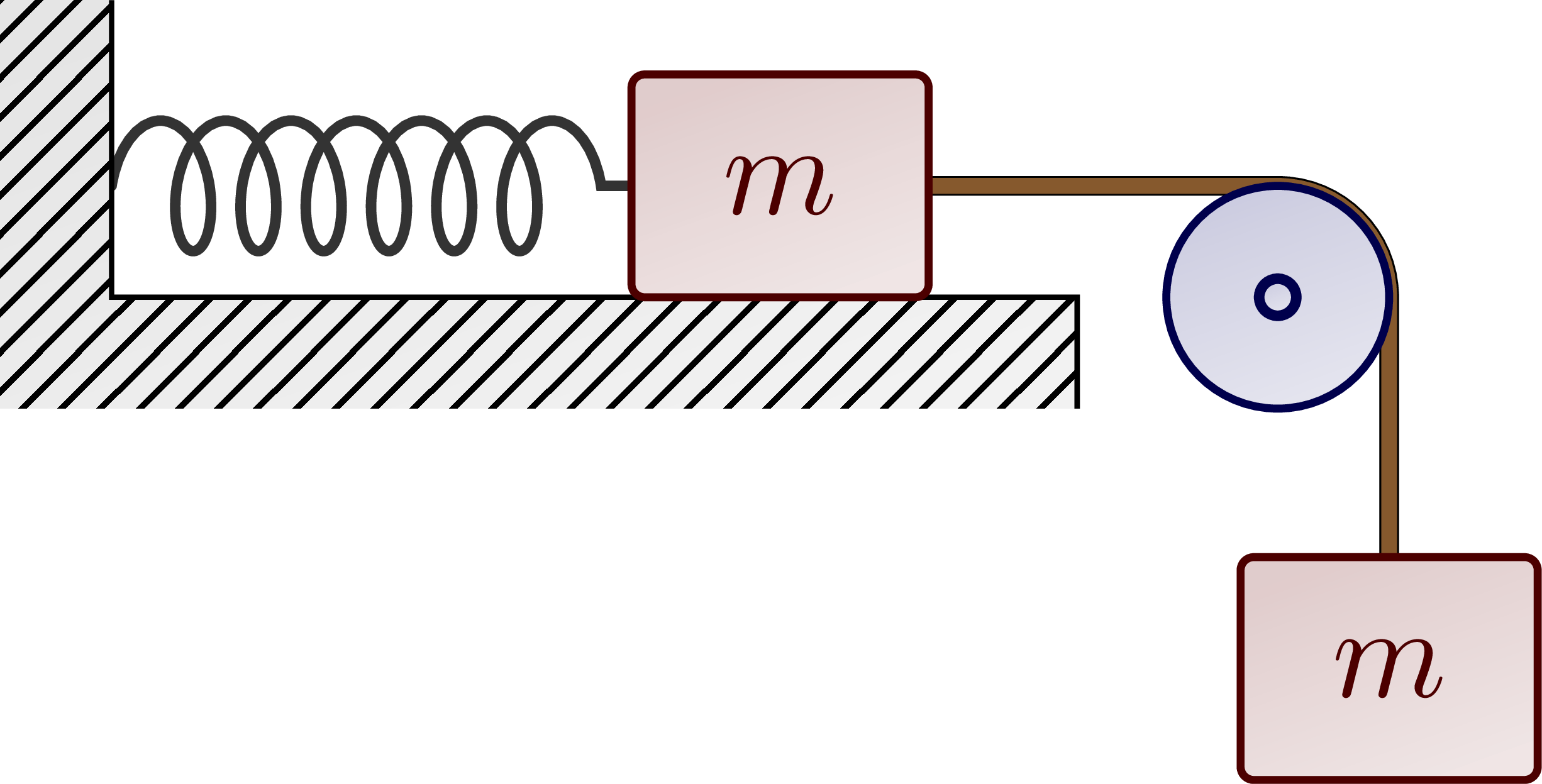
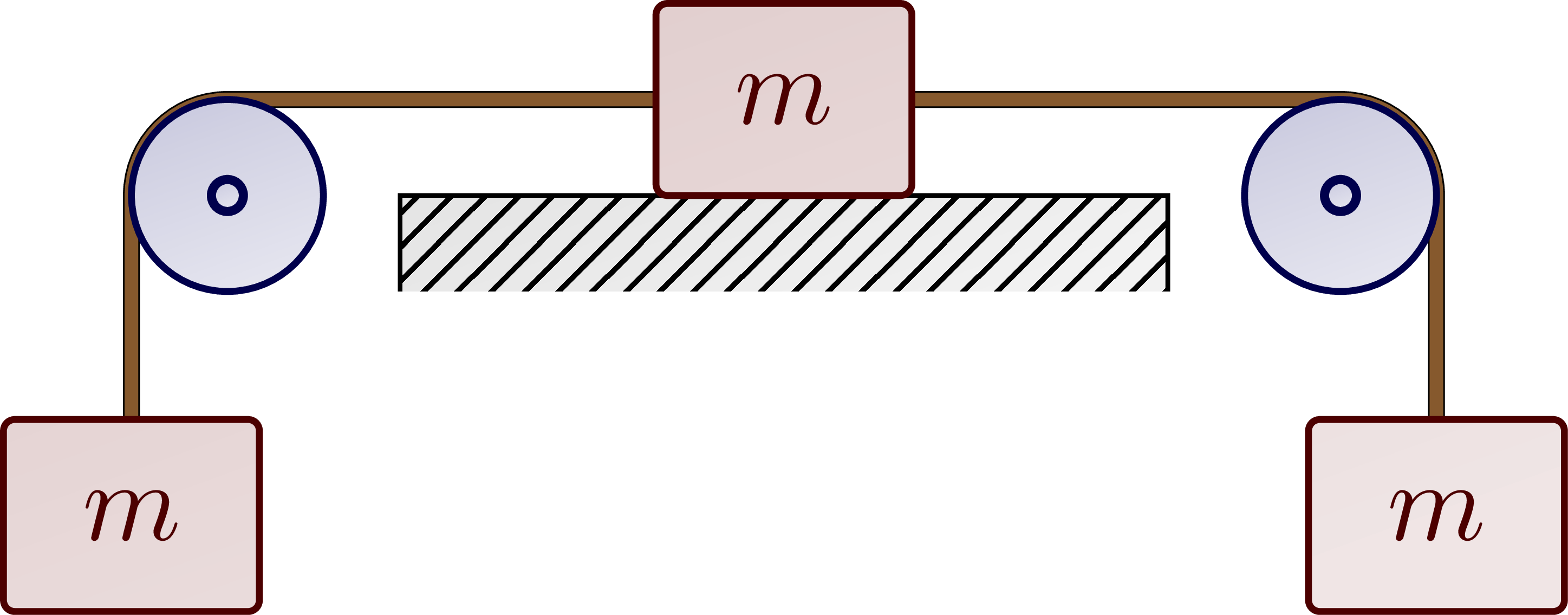
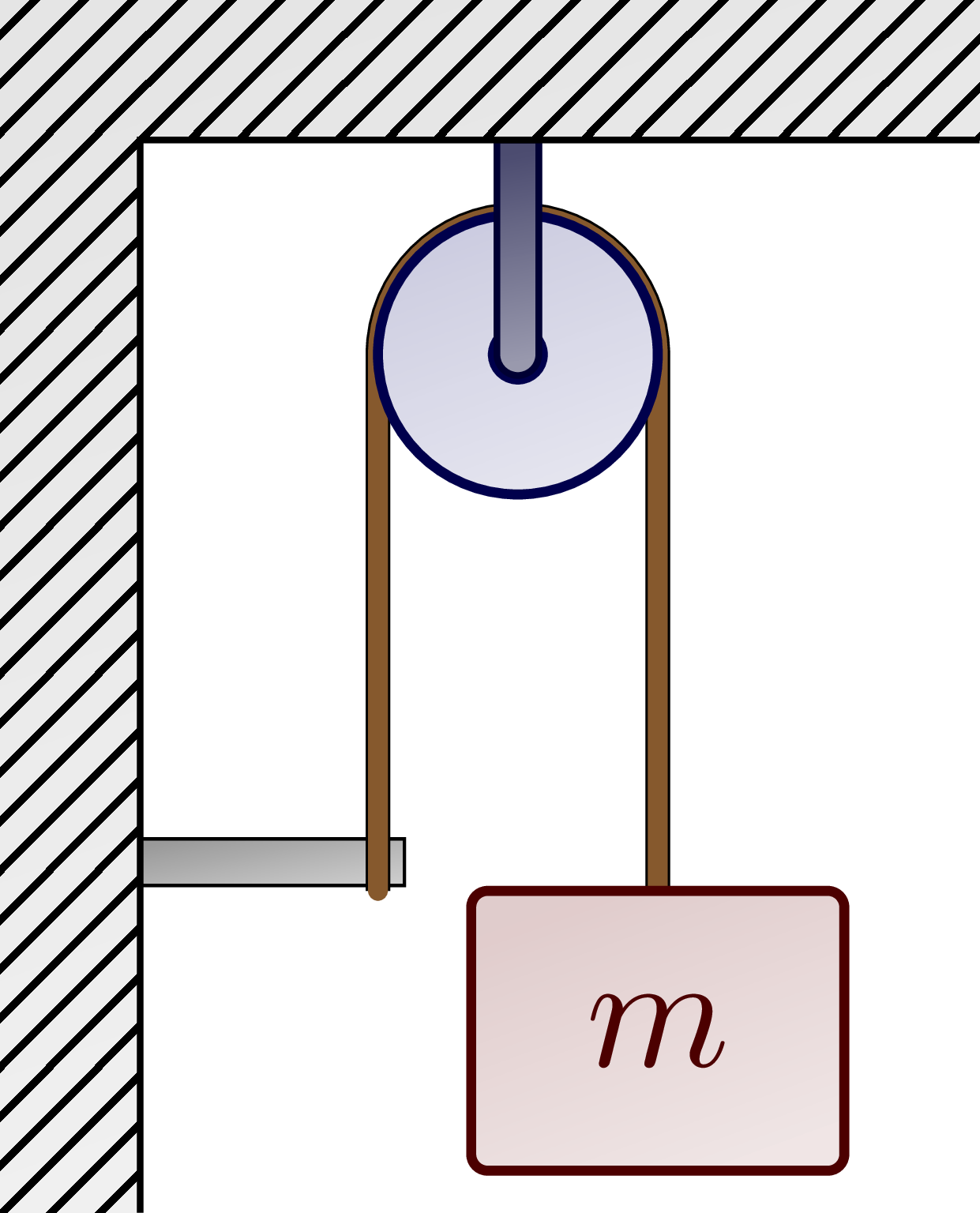
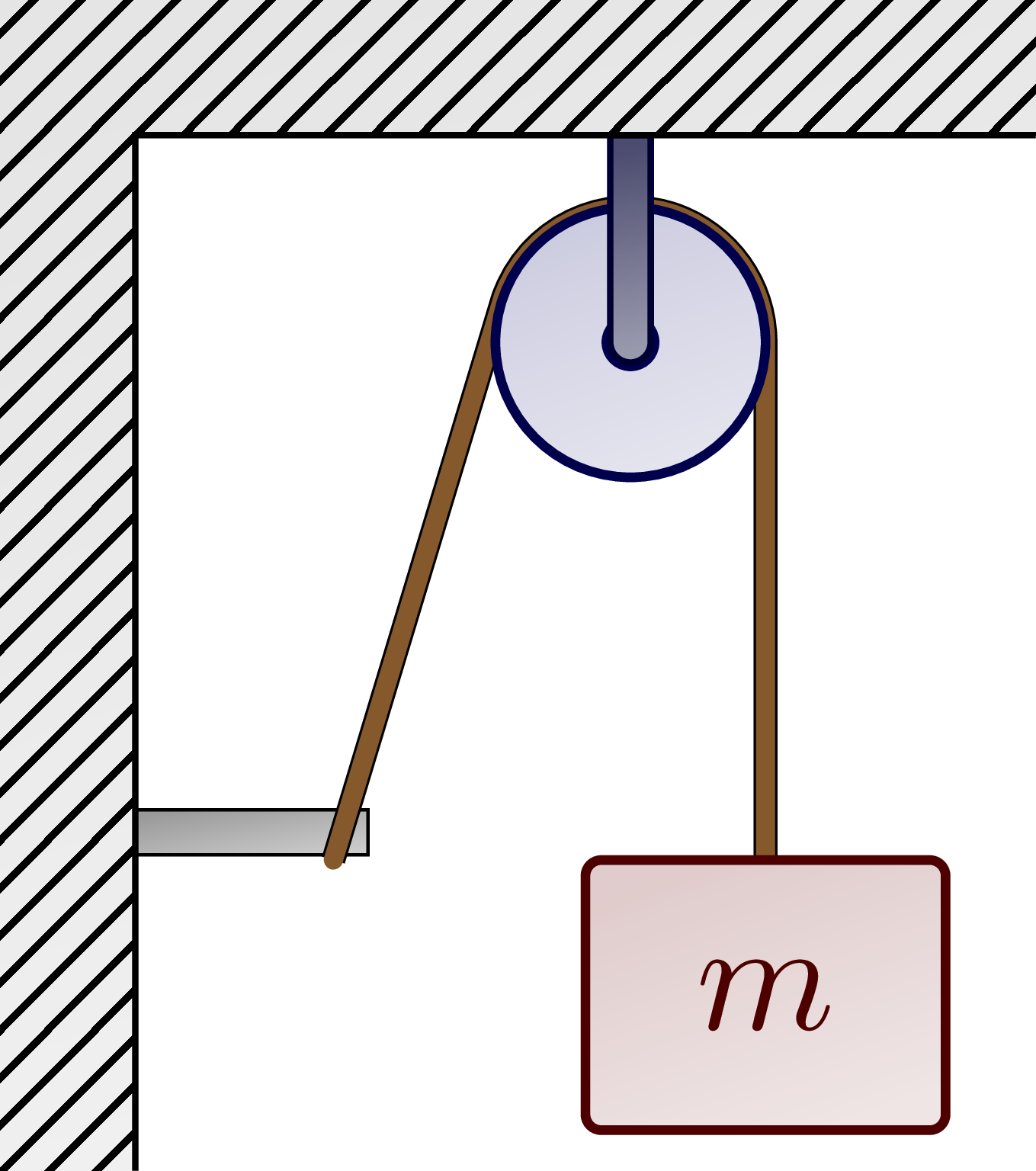
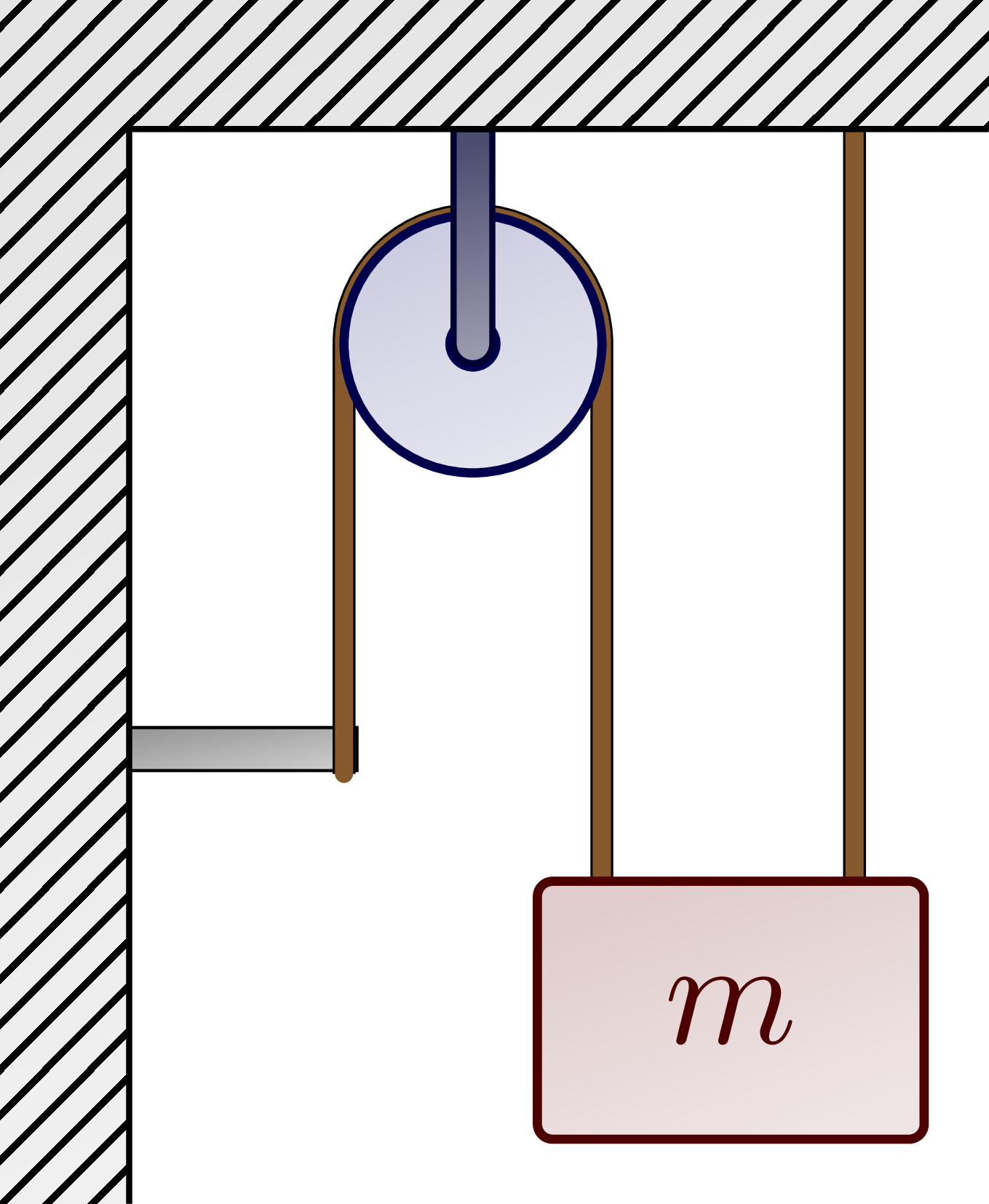
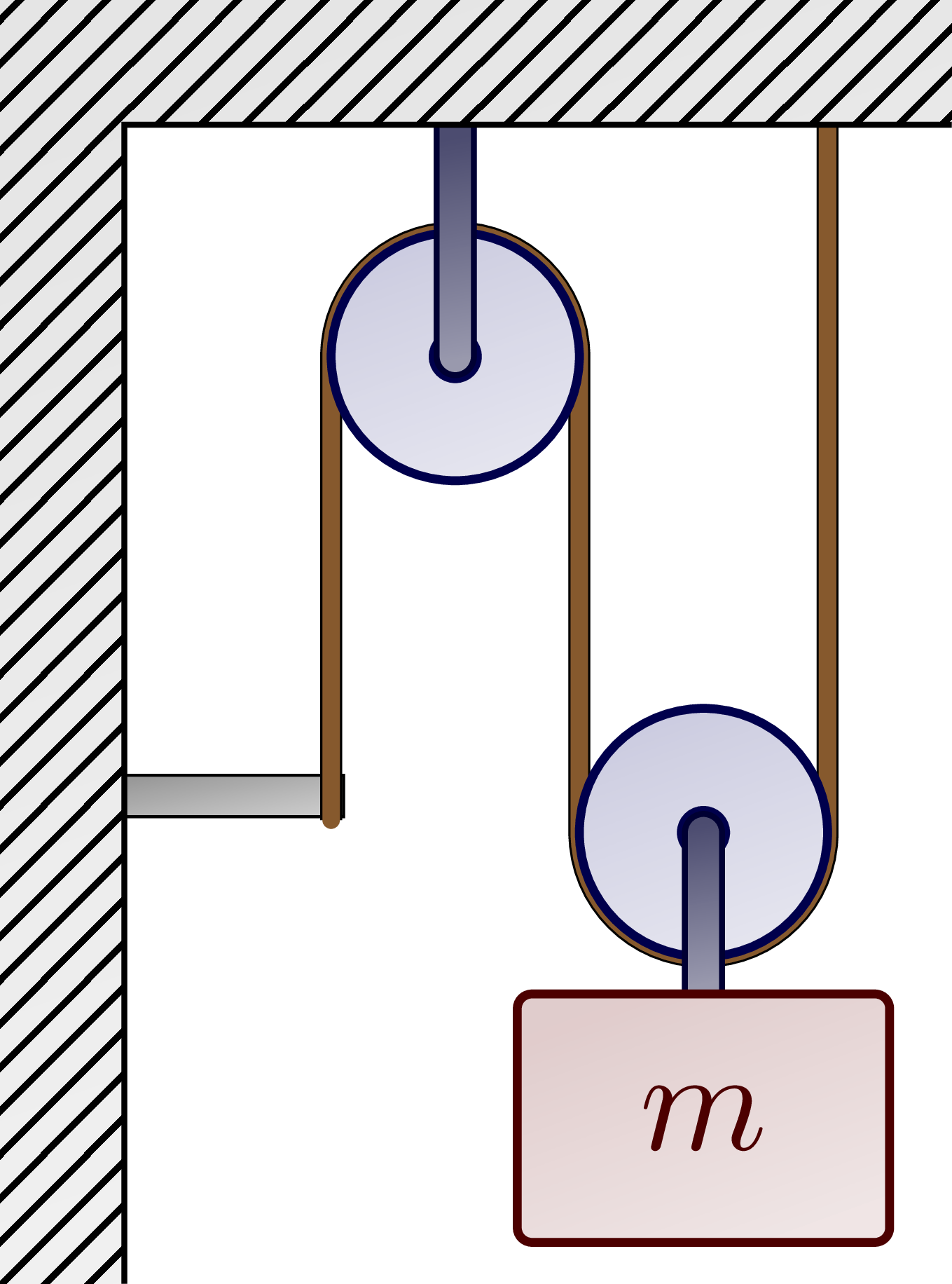
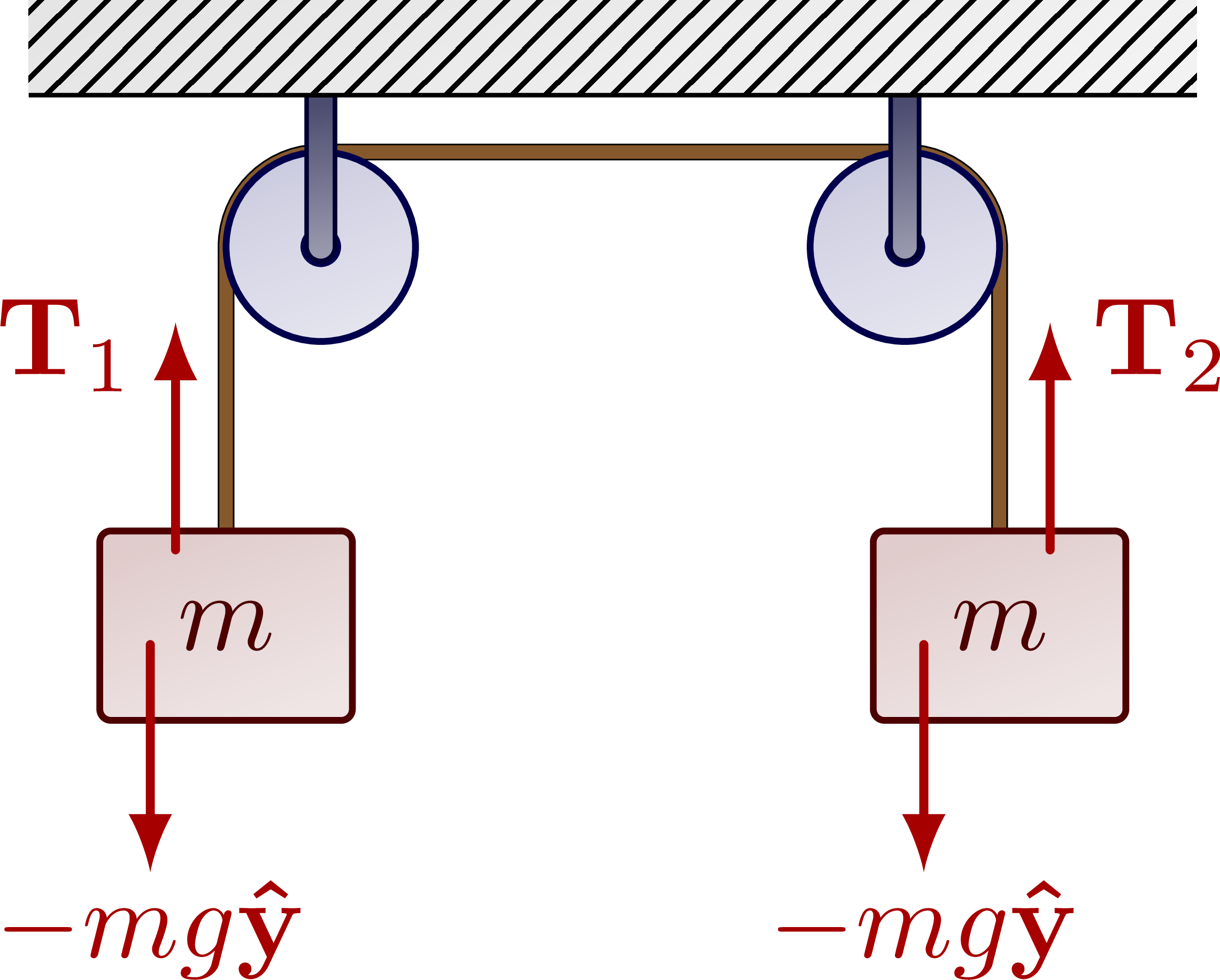
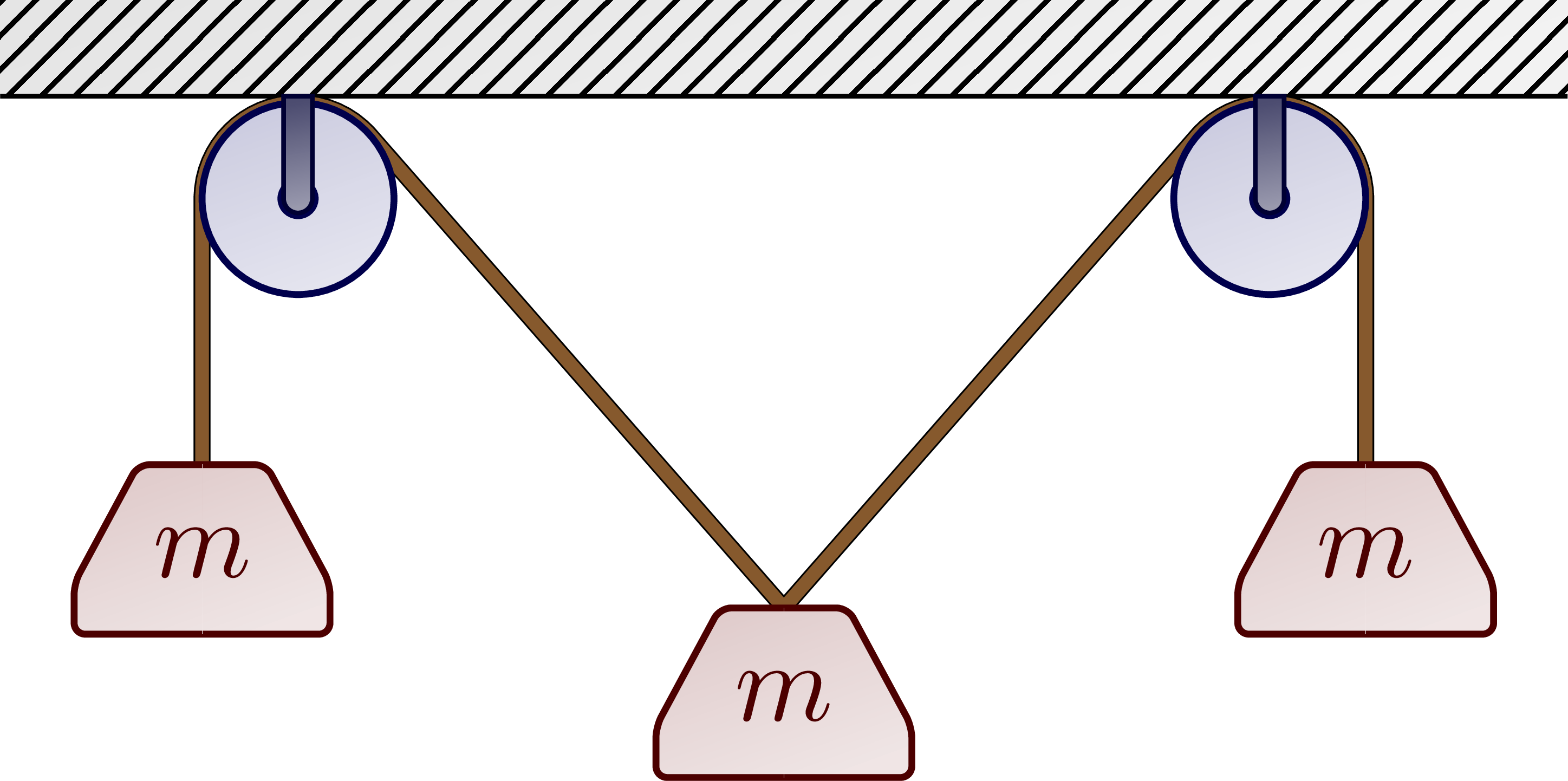
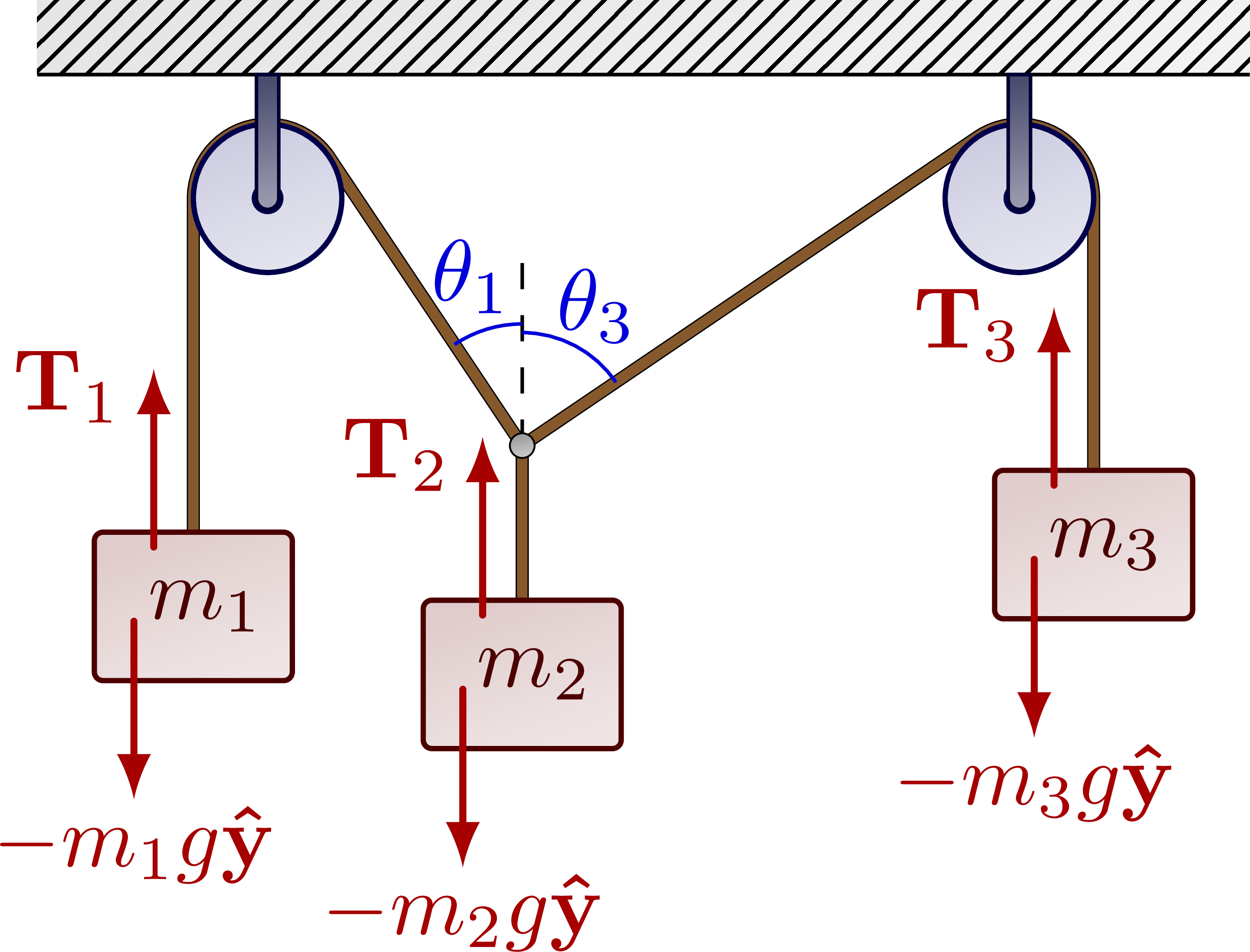

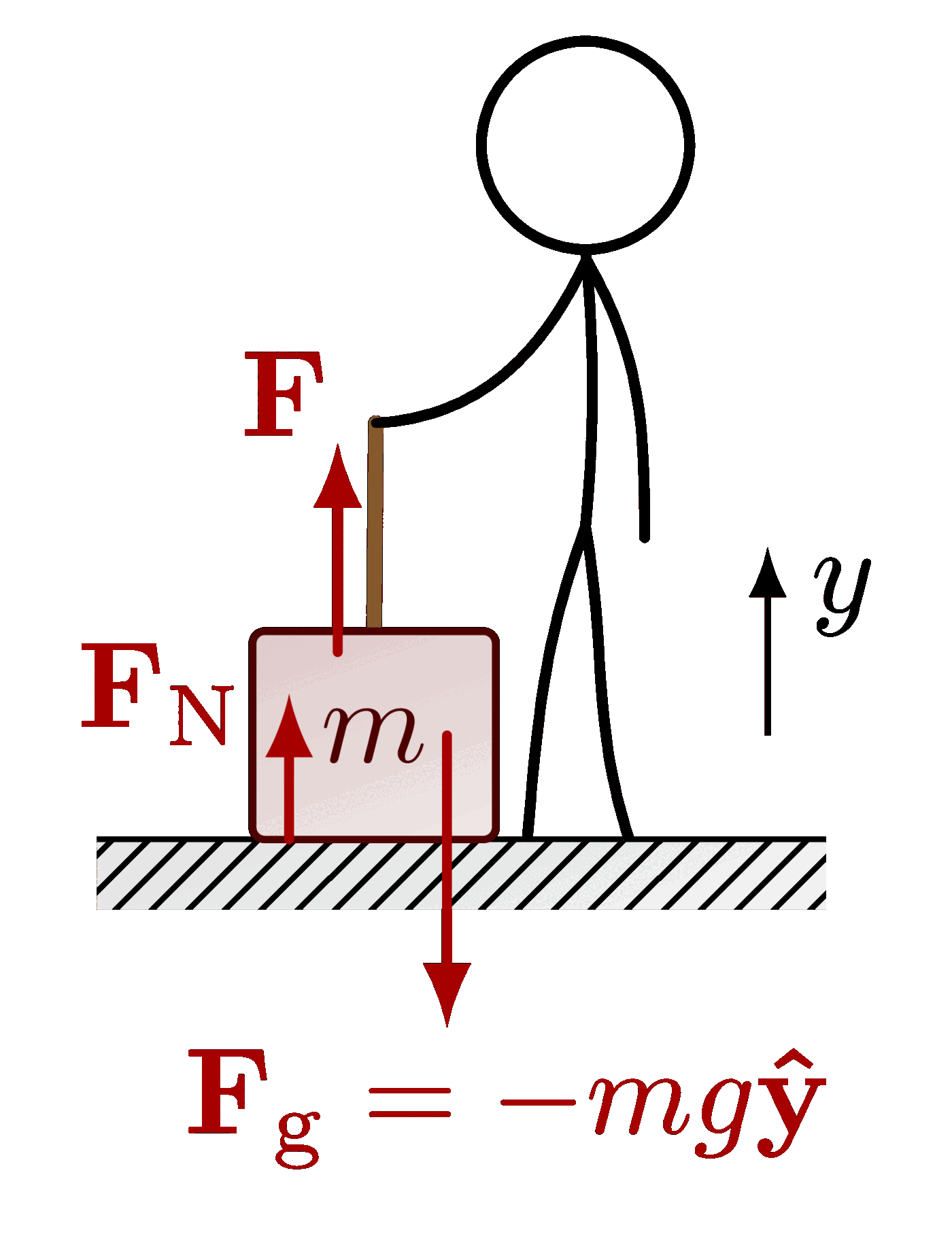
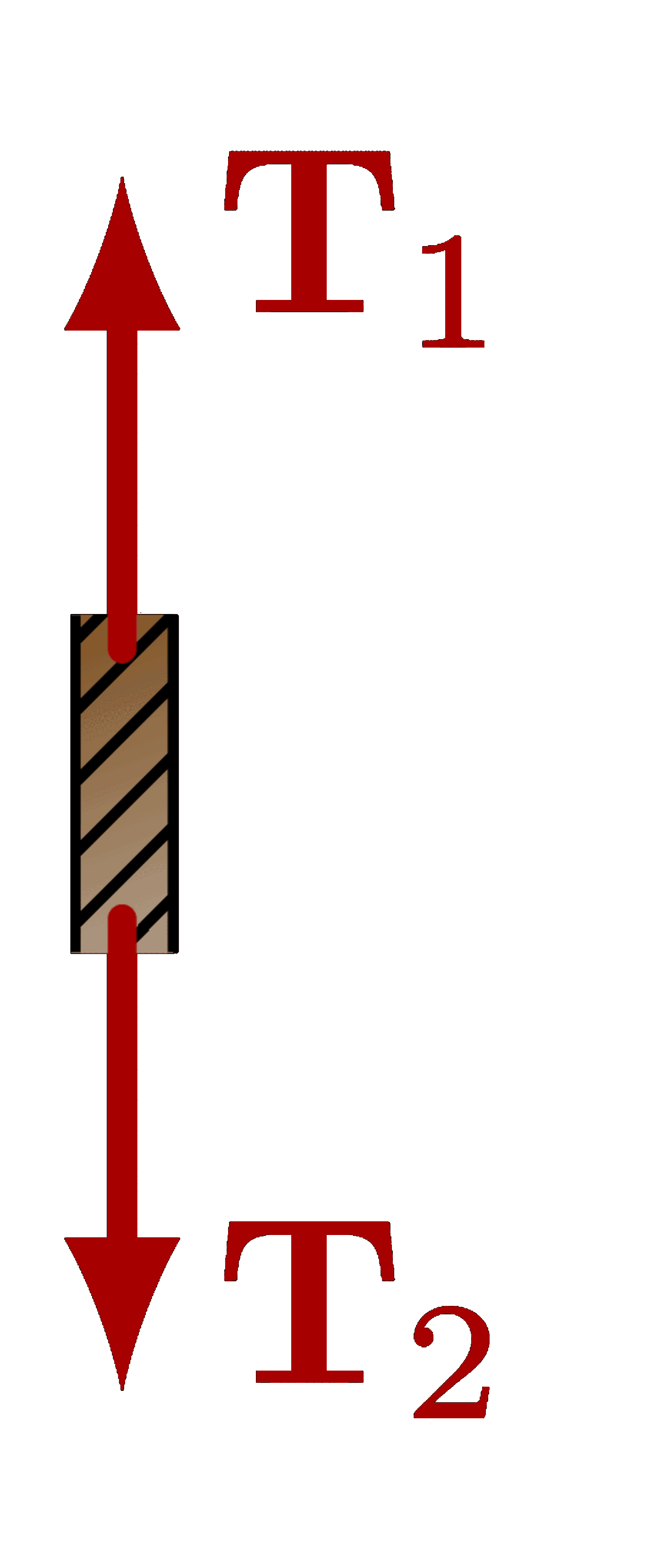
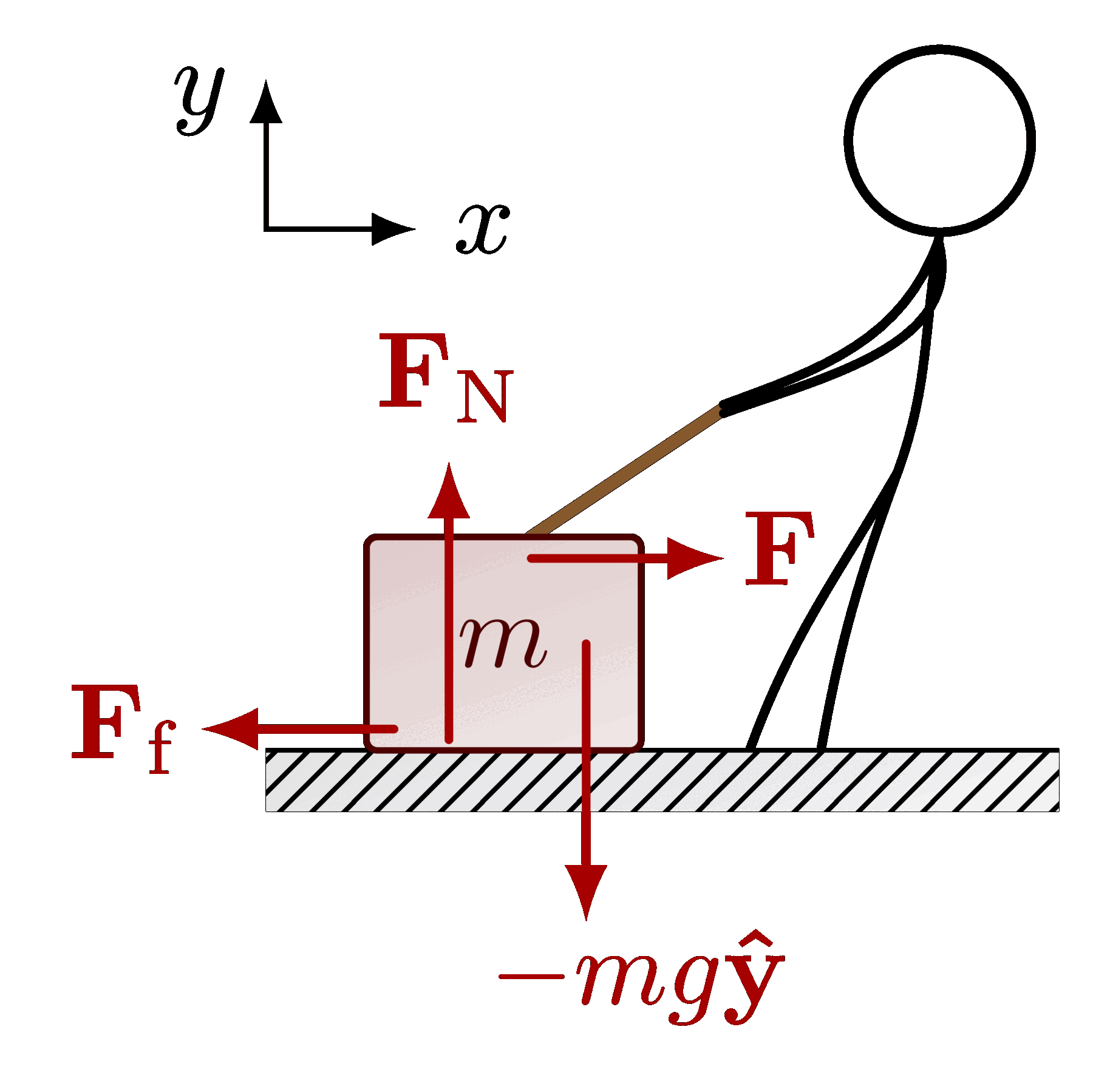
Amazing work. The code is the one for springs not pulleys
Hey bergmad, You
arewere right. It’s fixed now.Thanks for letting us know!
Izaak
I modified your tikz code to produce the image on my blog. Many thanks. Saved me a day (or more)!